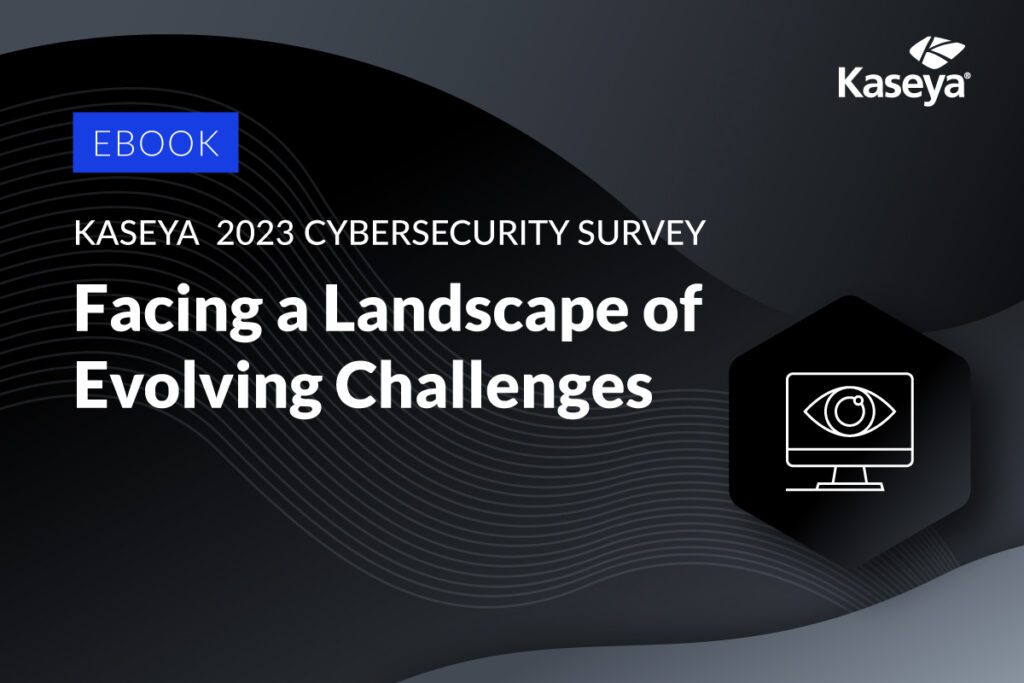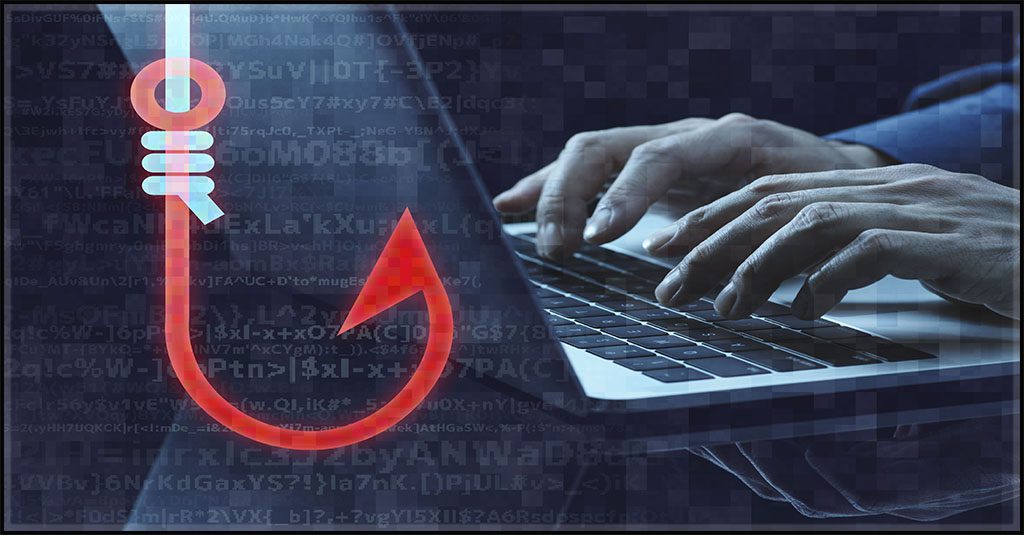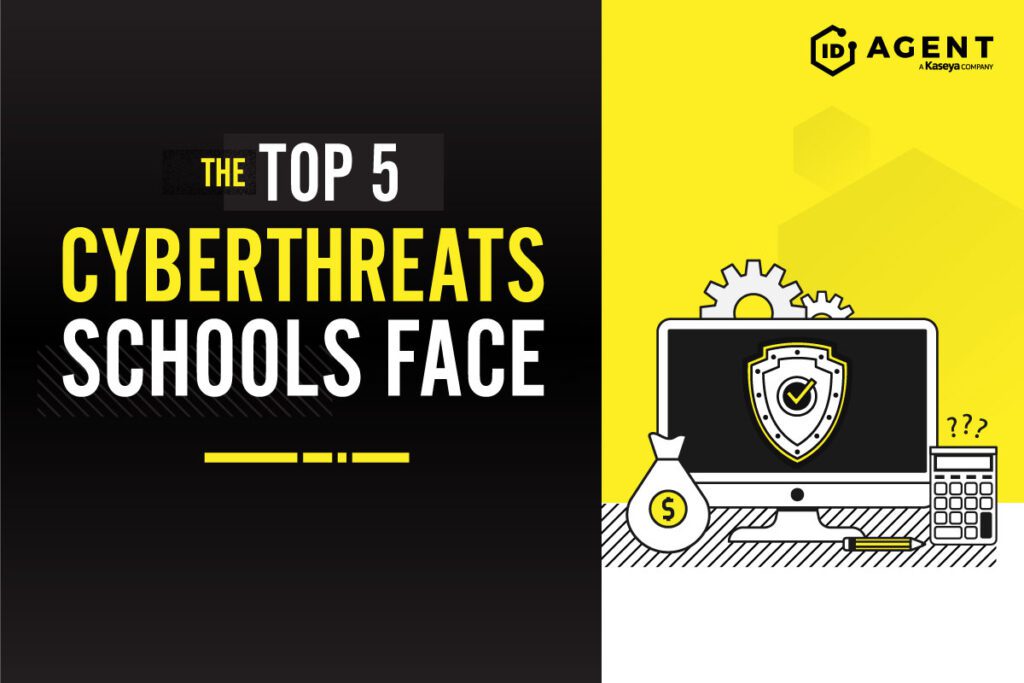What Is Cybercrime? Types, Effects & Protection Best Practices

Cybercrime in the modern, digital-first world has become an insidious problem for individuals and businesses alike. From phishing and business email compromise (BEC) to ransomware and identity theft, there are plenty of avenues for bad actors to choose from to carry out their malicious agendas.Before we elaborate on the best practices to fend off cybercrime, let’s first understand what cybercrime actually is, the different types of cybercrime and how it’s used against people and organizations today.
If you’re looking for practical advice on defending against cybercrime, check out our eBook, How to Build a Security Awareness Training Program, and find out how establishing a strong culture of security in your organization can help avoid over 70% of cybercrime.
You could further hasten your journey to robust cybersecurity by scheduling a demo now for BullPhish ID, Graphus and Dark Web ID. Discover how security awareness training, automated email security and dark web monitoring can effectively improve your cyber resilience.

See why choosing a smarter SOC is a smart business decision. DOWNLOAD AN EBOOK>>
What is cybercrime?
Cybercrime refers to criminal activities that involve the use of computers, networks and digital technologies to commit illicit acts or exploit vulnerabilities for various purposes. This type of criminal activity, conducted by anonymous hackers, can target individuals, organizations or governments, and encompasses a wide range of malicious actions conducted in the digital realm.
Cybercrime is driven by diverse motivations, ranging from financial gain and identity theft to hacktivism and state-sponsored activities. The allure of monetary profits often leads bad actors to engage in activities such as fraud, ransomware attacks and theft of financial information. State-sponsored actors may conduct cyber espionage for political or strategic advantages, while hacktivists seek to promote social or political agendas through disruptive online actions.
Additionally, the thrill of overcoming security measures, intellectual property theft and opportunistic attacks contribute to the multifaceted landscape of cybercrime. As technology continues to advance, combating cybercrime remains a critical challenge that requires ongoing efforts from law enforcement, cybersecurity professionals, businesses and individuals alike.
Let’s dive deeper and look into the various kinds of cybercrime.

See the challenges companies face & how they’re overcoming them in our Kaseya Security Survey Report 2023 DOWNLOAD IT>>
What are the different types of cybercrime?
There are chiefly eight types of cybercrime. We’ve listed them out and elaborated on each one below.
Hacking
Hacking is the act of manipulating or exploiting computer systems, networks or software to gain unauthorized access, often with the intent of extracting valuable information, causing disruption or achieving a specific objective, which is typically malicious. It encompasses a spectrum of activities, ranging from ethical hacking, conducted by security professionals to identify and fix vulnerabilities, to malicious hacking, where individuals or groups, known as black hat hackers, exploit weaknesses for personal gain, often involving financial motives, data theft or system disruption.
Additionally, hacktivism represents a form of hacking driven by ideological or political motivations, where individuals or groups leverage their technical skills to advance a cause or make a statement through digital means.
Phishing
Phishing exploits human vulnerability through deceptive emails, spear phishing, smishing (SMS phishing) and vishing (voice phishing). Social engineering plays a crucial role, manipulating individuals to unwittingly disclose sensitive information. Over the last few years, phishing attacks have proliferated to alarming levels. In these attacks, cybercriminals send deceiving messages to trick users into providing sensitive information, like login credentials, or to launch malware on the users’ systems.
While most organizations are vigilant against phishing attacks, some phishing emails still get past their defenses. This happens partly due to employees’ lack of awareness and the use of sophisticated social engineering techniques by cybercriminals.
An effective way to counter phishing emails is by employing email security solutions, like Graphus, which offers AI-driven automated security that blocks even the most sophisticated phishing attacks and empowers employees to report suspicious emails with ease. Graphus’ powerful AI algorithm helps protect against business email compromise (BEC), account takeover (ATO), credential theft and ransomware attacks.
Ransomware
Ransomware is a type of malicious software (malware) designed to encrypt files on a victim’s computer or network, rendering them inaccessible. Perpetrators then demand a ransom, typically in cryptocurrency, in exchange for providing the decryption key or restoring access to the encrypted data.
This form of cyberattack aims to extort money from individuals, businesses or organizations by exploiting their reliance on digital data. Ransomware attacks often have severe consequences, causing financial losses, operational disruptions and reputational damage to the victims.
Identity theft and credential leaks
Identity theft refers to the fraudulent acquisition and use of an individual’s personal information, such as their name, social security number or financial details, with the intention of committing various forms of financial fraud or gaining unauthorized access to resources. Cybercriminals use stolen identities to open fraudulent accounts, make unauthorized transactions or engage in other forms of cybercrime that can have severe financial and legal repercussions for the victim.
Credential leaks, on the other hand, involve the unauthorized exposure or release of login credentials, including usernames and passwords, often through data breaches or hacking incidents. Cybercriminals can exploit exposed credentials to gain unauthorized access to online accounts, compromising the security and privacy of individuals or organizations. Credential leaks can have far-reaching consequences, as cybercriminals may use the stolen credentials for identity theft, unauthorized access or more cybercrime.
Tools like Dark Web ID serve as an effective deterrent to such cybercrime. Dark Web ID monitors for compromised credentials in dark web markets, data dumps and other sources, and alerts you to trouble fast, allowing you to take defensive measures before cybercriminals attack.
Financial fraud
In the context of cybercrime, financial fraud refers to deceptive and illicit activities carried out with the intent of obtaining financial gains through digital channels. This type of cybercrime encompasses a range of fraudulent schemes conducted over the internet, such as online scams, credit card fraud, investment fraud and other deceptive practices. Cybercriminals often employ techniques like phishing, social engineering and malicious software to manipulate individuals or organizations into providing sensitive financial information, making unauthorized funds transfers or falling victim to financial scams.

What cybercriminal tricks do employees fall for in phishing simulations? Find out in this infographic. GET IT>>
Cyberbullying
Cyberbullying is a form of harassment or intimidation that occurs through digital platforms, such as social media, messaging apps or online forums. It involves the use of technology to target individuals with harmful, threatening or demeaning content with the intent of causing emotional distress or harm.
Cyberbullying can take various forms, including spreading rumors, sending explicit messages, sharing personal information without consent or creating fake profiles to impersonate and harass the victim.
The psychological impact of cyberbullying on victims can be severe, leading to emotional distress, anxiety and other extreme mental health challenges. Efforts to combat cyberbullying usually involve promoting digital literacy, encouraging responsible online behavior and implementing measures to report and address online harassment.
Data breaches
A data breach refers to the unauthorized access, acquisition or disclosure of sensitive and confidential information from a database, computer system or network. During a data breach, cybercriminals gain access to information such as personal details, financial records, login credentials or other sensitive data without the knowledge or consent of the individuals or entities involved.
The motives behind data breaches can vary, including financial gain, identity theft, corporate espionage or activism. Data breaches can lead to reputational damage for organizations and increased risks of fraud or other cybercrimes. Preventive measures often involve implementing robust cybersecurity practices, encryption, multifactor authentication and continuous monitoring to detect and mitigate potential breaches.
Cyber espionage
Cyber espionage is the use of digital methods to gain unauthorized access to sensitive information for political, economic or military purposes. In the context of cybercrime, it involves the covert and sophisticated collection of intelligence or proprietary data from individuals, organizations or governments.
Cyber espionage can target various sectors, including government agencies, corporations or research institutions, with the goal of obtaining classified information, trade secrets and strategic insights. State-sponsored actors, intelligence agencies or cybercriminal groups may engage in cyber espionage, utilizing advanced techniques such as malware, phishing or hacking to infiltrate and compromise targeted systems.

Learn how to spot today’s most dangerous cyberattack & get defensive tips in Phishing 101 GET EBOOK>>
What are the effects of cybercrime on businesses and individuals?
Cybercrime can devastate businesses and individuals alike. Let’s look at how it can affect them both.
Effects of cybercrime on businesses
Businesses and organizations that fall victim to cybercrime may experience the following:
- Financial consequences: Cybercrime can result in direct financial impacts for businesses, including theft of funds, ransom payments and costs associated with incident response. The financial repercussions are significant across businesses of all sizes.
- Operational disruption: Downtime, data loss and potential halts in critical services can disrupt business operations. There are thousands of examples of businesses experiencing operational disruptions due to cyber incidents, impacting productivity and revenue streams.
- Data breaches and privacy concerns: Data breaches compromise sensitive customer information, leading to privacy concerns and potential legal consequences for failing to protect valuable data.
- Reputation damage: Businesses can suffer severe reputation damage due to cyber incidents, eroding trust among customers, partners and stakeholders. High-profile breaches often lead to long-term damage to a company’s brand and credibility.
- Intellectual property theft: Theft of intellectual property (IP) is a significant consequence, affecting a company’s competitiveness and market position. Cybercriminals targeting proprietary information can compromise a business’s innovative edge.
- Regulatory compliance issues: Failing to protect customer data in accordance with regulations like GDPR can result in legal ramifications and financial penalties, further impacting a company’s reputation and bottom line.
- Supply chain disruption: An attack on one part of the supply chain can cause disruptions across multiple businesses, affecting the delivery of goods and services and creating a domino effect of financial and operational consequences.
- Increased cybersecurity costs: Businesses often incur increased costs post-attack, investing in enhanced cybersecurity measures, employee training and incident response capabilities to mitigate future risks.

Get the scoop on 5 of the worst email-based attacks plus tips to protect businesses from them. GET INFOGRAPHIC>>
Effects of cybercrime on individuals
Cybercrime can also have a severe impact on individuals in the following ways:
- Financial losses: Individuals can suffer direct financial losses due to cybercrime, including online fraud, identity theft and unauthorized access to financial accounts, impacting personal finances and credit.
- Identity theft: Cybercriminals steal personal information for identity theft, leading to the opening of fraudulent accounts and various forms of financial fraud against individuals.
- Privacy breaches: Cybercrime violates personal privacy, with leaked private information causing potential embarrassment, harassment or even extortion for affected individuals.
- Emotional distress: People may experience anxiety, stress and feelings of vulnerability when personal information is exposed, impacting their mental well-being. Information in the hands of the wrong people can lead to bad outcomes like online abuse, blackmail, stalking or cyberbullying.
- Reputation damage: False information online, doxxing incidents or compromising content shared without consent can damage an individual’s reputation, affecting personal and professional life.
- Career and professional impact: Compromised online profiles, leaked sensitive information or false accusations online can significantly impact an individual’s career prospects and professional standing.

Find out about five of today’s biggest dark web threats to businesses in this infographic. DOWNLOAD IT>>
How to protect against cybercrime
To safeguard against the ever-evolving landscape of cybercrime, individuals and businesses must adopt proactive measures and stay informed about potential risks. Consider these best practices:
- Education on cyberthreats: Understanding common cyberthreats, such as phishing, malware and social engineering, is crucial. Educate yourself and your team on recognizing suspicious activities, ensuring a proactive defense against potential attacks.
- Employee training and awareness: For businesses, ongoing employee training is vital to maintaining a cybersecurity-aware workforce. Regularly update employees on emerging threats and emphasize the importance of promptly reporting suspicious activities.
- Credential monitoring: Regularly monitor and update passwords, reducing the risk of unauthorized access. A solution like Dark Web ID provides 24/7/365 monitoring of business and personal credentials, including domains, IP addresses and email addresses.
- Advanced email protection: Given that most cyberattacks begin with emails, deploy an advanced email protection solution to detect and eliminate threats before users can be tricked by attacks. Tools like Graphus offer automated security, protecting against phishing, business email compromise and ransomware.
- Backup strategies: Implement robust backup strategies, following the 3-2-1 backup rule (have at least three total copies of your data, two of which are local but on different devices and one copy off-site). Kaseya’s solutions, like Unitrends or Datto, can provide reliable backup options to ensure data recovery in case of a cyber incident.
- Incident response planning: Businesses should establish an incident response plan to handle cyber incidents effectively. Clearly outline the steps to take, including reporting, containment and recovery. Being prepared with a well-defined response plan can mitigate the impact of a cybersecurity breach.
While there are many protection measures, including software, patching, multifactor authentication and strong firewalls, some tactics are commonly overlooked. ID Agent offers a powerful suite of solutions to help you defend against cybercrime quickly and cost-effectively.
How to educate users about cyberattacks
Being aware of cybercrime is absolutely critical today for individuals and businesses as it helps prevent financial losses, data breaches and reputational damage. For individuals, awareness safeguards personal information, finances and online identity. From an organizational perspective, awareness ensures the protection of sensitive data, client trust and the overall stability of operations. Use these tactics to build awareness:
- Interactive training sessions: Conduct engaging training sessions where users actively participate, learning to identify and respond to potential cyberthreats.
- Regular awareness campaigns: Launch frequent awareness campaigns to reinforce cybersecurity principles and keep users informed about emerging threats and best practices.
- Use real-life examples: Share real-life examples of cyber incidents, illustrating the consequences of falling victim to attacks, creating a tangible understanding of potential risks.
- Highlight social engineering tactics: Focus on social engineering tactics, educating users on how cybercriminals manipulate human behavior to gain unauthorized access.
- Encourage reporting of suspicious activity: Foster a culture of reporting by encouraging users to report any suspicious activities or potential security breaches promptly.
- Mobile device security: Provide guidelines on securing mobile devices, including the use of passcodes, secure Wi-Fi and being cautious about app permissions.
- Password hygiene practices: Emphasize the importance of strong password practices, regular updates and the use of password managers for added security.
- Secure remote work practices: In the era of remote work, educate users on secure practices such as using virtual private networks (VPNs), securing Wi-Fi connections and ensuring the security of home networks.
When it comes to security awareness training, solutions like BullPhish ID security awareness training and phishing simulation platform contain everything an organization requires to train its employees to face off against any kind of social engineering or phishing attempt.

Learn about the top cyber threats K-12 schools face and how to mitigate them. DOWNLOAD INFOGRAPHIC>>
What to look for in a security awareness training solution?
Here are a few things you need to keep in mind when selecting the ideal security awareness solution for your organization. A good security awareness training solution should consist of the following three elements:
- Security training: Lessons about the major security threats and security-related topics your users are likely to face.
- Compliance education: Lessons about the industry regulations related to cybersecurity and data privacy the organization and its employees must comply with by law.
- Phishing simulations: Exercises in which simulated phishing messages are sent to employees and their actions in response to those messages are measured to determine which employees are likely to fall for online scams and who needs education about phishing. Employees who train using simulations retain 11% more knowledge.

Learn how to identify and mitigate malicious and accidental insider threats before there’s trouble! GET EBOOK>>
How BullPhish ID, Dark Web ID and Graphus can help you fight cybercrime
Kaseya’s Security Suite has the tools that MSPs and IT professionals need to identify and mitigate all kinds of cyber-risk efficiently and at the best price point. Our solutions seamlessly integrate with one another and leverage automation and AI to make an IT professional’s life easier.
BullPhish ID – This effective, automated security awareness training and phishing simulation solution provides critical training that improves cyber resilience, prevents human error and reduces a company’s risk of being hit by a cyberattack.
Dark Web ID – Our award-winning dark web monitoring solution provides the greatest amount of protection with 24/7/365 human and machine-powered monitoring of business and personal credentials, including domains, IP addresses and email addresses.
Graphus – Graphus is a cutting-edge, automated email security solution that puts three layers of AI-powered protection between employees and phishing messages. It works equally well as a standalone email security solution or supercharges your Microsoft 365 and Google Workspace email security.
Learn more about our security products, or better yet, take the next step and book a demo today!